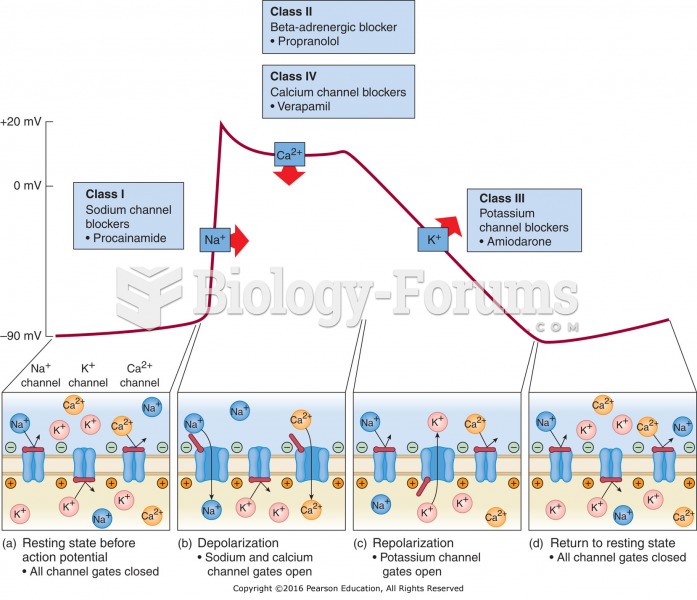Answer to Question 1
Correct Answer: 2,3,4
Rationale 1: Ticlid does not act to dissolve clots.
Rationale 2: Ticlid is an adenosine diphosphate (ADP) receptor blocker that acts to make platelets unable to aggregate, thus rendering them less sticky.
Rationale 3: Ticlid causes irreversible changes in platelet plasma membranes.
Rationale 4: Ticlid does decrease the blood's ability to clot.
Rationale 5: The mechanisms of action of Ticlid and heparin are not alike.
Global Rationale: Ticlid is an adenosine diphosphate (ADP) receptor blocker that acts to make platelets unable to aggregate, thus rendering them less sticky. Ticlid also causes irreversible changes in platelet plasma membranes and decreases the blood's ability to clot. Ticlid does not act to dissolve clots. The mechanisms of action of Ticlid and heparin are not alike.
Answer to Question 2
Correct Answer: 3,4
Rationale 1: Hemostatic drugs are given to inhibit fibrin destruction, thereby promoting clot formation.
Rationale 2: Thrombolytic drugs are given to remove existing clots by dissolving them.
Rationale 3: Anticoagulants inhibit specific clotting factors, thereby preventing clot formation.
Rationale 4: Antiplatelet agents inhibit the action of platelets, thereby preventing clot formation.
Rationale 5: Clotting factor concentrates replace missing clotting factors, thereby promoting clot formation.
Global Rationale: Anticoagulants inhibit specific clotting factors, thereby preventing clot formation. Antiplatelet agents inhibit the action of platelets, thereby preventing clot formation. Hemostatic drugs are given to inhibit fibrin destruction, thereby promoting clot formation. Thrombolytic drugs are given to remove existing clots by dissolving them. Clotting factor concentrates replace missing clotting factors, thereby promoting clot formation.







